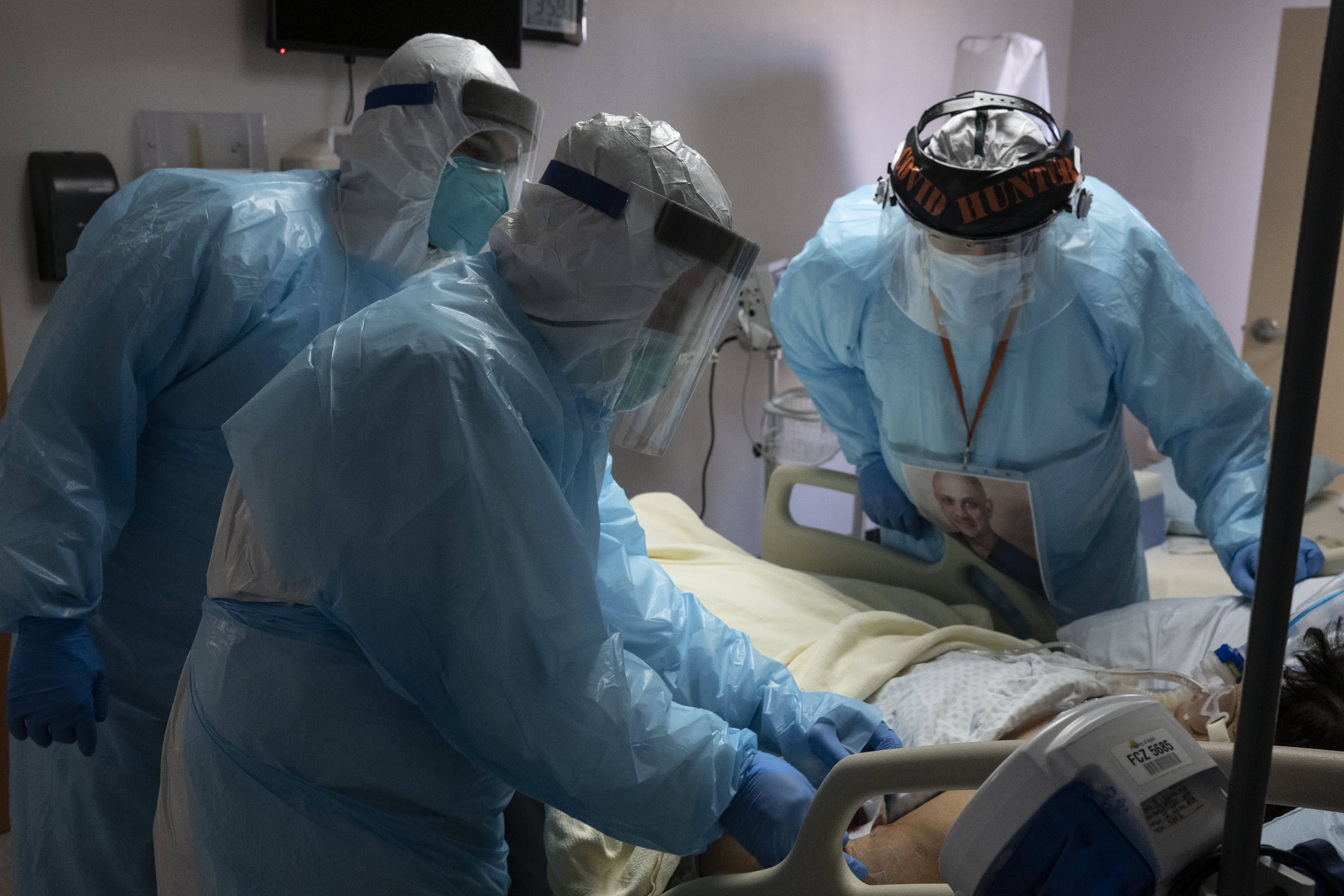Medical staff examine a patient in the Covid-19 intensive care unit at United Memorial Medical Center in Houston on Nov. 16, 2020.
Go Nakamura | Getty Images
The coronavirus pandemic may be an extra stressful time for Medicare beneficiaries.
Not only are they generally in a high-risk group for Covid, most of them — about 83% — are worried about the cost of treating the virus if they contract it, according to a survey from MedicarePlans.com.
Whether they need to be concerned is a separate consideration.
Nearly 63 million people are enrolled in Medicare, the majority of whom are age 65 or older. While Congress and regulators have nixed out-of-pocket outlays for testing, the potential cost of treating the virus would depend at least partly on the severity of the illness as well as a beneficiary’s specific coverage.
In the U.S., the pandemic has resulted in more than 13.9 million cases and at least 273,000 deaths, Johns Hopkins University research shows. Medicare beneficiaries have accounted for about 1.2 million cases reported through mid-September, according to preliminary data from the Centers for Medicare and Medicaid Services.
More than 332,000 of those involved hospitalizations. Almost half of the stays lasted one to seven days, the early data show. Roughly 5% last longer than 30 days.
While some Medicare beneficiaries have additional insurance that covers the out-of-pocket costs — i.e., copays and deductibles — others pay more for hospital stays and various medical services.
Most people recover from the coronavirus without requiring significant medical care. However, here are costs that could come with your Medicare coverage if treatment is needed.
Basic Medicare costs
About 60% of beneficiaries stick with basic, or original, Medicare (Part A hospital coverage and Part B outpatient care). Many also have additional coverage — e.g., Medicaid, an employer plan or a supplemental policy (aka Medigap).
Basic Medicare has no cap on out-of-pocket spending. If you have no additional coverage — 6.1 million beneficiaries did not, at last count — you’d pay a $1,408 Part A deductible if you’re admitted to the hospital this year. (In 2021, that amount is $1,484).
That deductible would cover the first 60 days per benefit period. Beyond that, daily copays of $352 ($371 in 2021) apply up to the 90th day. Anything above dips from “lifetime reserve” days at a daily rate of $704 ($742 in 2021).
Medicare Part A deductible and coinsurance
| Type of cost-sharing | 2020 | 2021 |
|---|---|---|
| Inpatient hospital deductible | $1408 | $1484 |
| Daily coinsurance for 61st-90th day | $352 | $371 |
| Daily coinsurance lifetime reserve days | $704 | $742 |
| Skilled nursing facility coinsurance days 21 – 100 | $176 | $185.50 |
For patients moved to a skilled nursing facility, there is no copay for the first 20 days; it’s $176 ($185.50 in 2021) after that through day 100.
Medical services like doctor’s visits are delivered through Part B. It has a $198 deductible this year ($203 for 2021) and beneficiaries typically pay 20% of covered services. Generally speaking, care from providers who treat you in the hospital falls under Part B.
If you have a Medigap policy, much of that cost-sharing would be covered, either partially or fully. However, Medigap policies have their own rules for enrolling, which can limit who has access to them. And, they can cost several hundred dollars a month.
Meanwhile, Medicare Part D (prescription drug coverage) also has no cap on out-of-pocket spending. The cost of medicine depends on the specifics of your coverage. If there’s a deductible with your plan, it can be up to $435 this year ($445 for 2021).
Advantage Plans
About 24 million Medicare beneficiaries get Parts A and B delivered through an Advantage Plan, which also usually includes prescription drug coverage.
These plans may or may not have a monthly premium on top of what beneficiaries pay for basic Medicare. They also typically have different deductibles and copays from original Medicare, and those costs can vary from plan to plan.
For instance, while you might not face a Part A deductible of $1,408 for a hospital stay, your Advantage Plan may charge you a daily copay for the time you’re an inpatient.
“We typically see either a daily hospital copay for a certain number of days, like $275 per day for seven days, or a flat copay for the whole stay — $500 no matter how many days,” said Danielle Roberts, co-founder of insurance firm Boomer Benefits and a Medicare expert.
More from Personal Finance:
She said those amounts are fairly standard, although the copays could be lower in some areas of the country.
Some Advantage Plans have put their standard cost-sharing on hold during the pandemic. For example, Aetna is waiving cost-sharing for inpatient admission for Covid-19 treatment or health complications associated with the virus through Dec. 31. Humana also is waiving such costs, with no end date for the waiver noted.
Also, Advantage Plans come with annual out-of-pocket limits. While that amount can vary from plan to plan, the maximum for 2021 is $7,550, up from $6,700 this year.
Globally, there have been more than 64 million coronavirus cases, resulting in nearly 1.5 million deaths.
